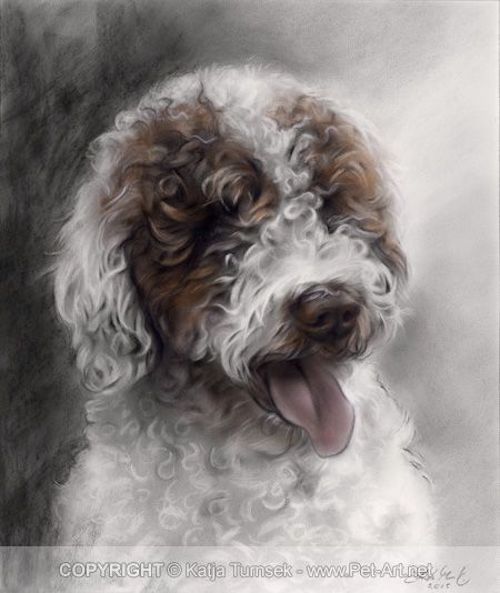
The Spanish Water Dog comes from Spain. “How shocking,” says no one.
Sources vary on how, and from where the breed came, and theories range from the breed’s ancestors having arrived with the Moors, to its forefathers hitching rides on Turkish boats centuries ago. Our interest in this post is that pockets of the dogs ended up in different areas of the country, and as such, they developed somewhat different phenotypes and sizes from each other.
Some say the population was divided into two major areas of Spain. The first was situated in eastern Andaluz where the breed “stretched its legs” between the area’s mountain ranges, plains and marshes of Guadalquivir. The second pocket was found in the northern coastal region’s fishing villages and wharves.
Others maintain that the Spanish Water Dog was developed in three different areas, not two. The dogs found in Northern Spain, in Asturias and Cantabria were usually smaller and of lighter colored, and, in fact, these dogs were eventually recognised as a variety of the Spanish Water Dog by the Royal Canine Society of Spain. In 2011, they were reclassified and recognized by the Breeds Committee of the Spanish Ministry of Environment as the Cantabrian Water Dog.
The other grouping was found in the marshes of western Andalusia and was easily distinguished from the others by its long, thin corded coat.
The third and most dense population of the dogs was found in the southern Andalusian sierras. There, the breed known for centuries as the “Turkish Dog” was used as a shepherd dog, which is to say he herded flocks of sheep. pigs, and goats from one pasture to another. Despite its name, the Spanish Water Dog is classified as a herding breed by the AKC, FCI, and others, though historically, the dogs were also taught to work with fishermen, and to retrieve when hunting with farmers.
The breed, however, encountered lean times, and starting in 1975, Santiago Montesinos and Antonio Garcia Perez committed themselves to saving it. They acquired or “borrowed” dogs from all its regions (the majority from Andalucia), and bred them carefully to preserve working abilities and type.
Today’s Spanish Water Dog is an amalgamation of the aforementioned types, a well blended balance of traits. Adapted to the variations of humidity and drought of the regions in which its relatives developed, the SWD retains its work ethic, its herding style described to be much like that of the Hungarian Puli.
From the AKC parent club: “The Spanish breed club continues to develop an annual working competition for this breed, drawing from all the diverse skills the breed historically performed. One of the first developed was a herding test using cattle, demonstrating the dog’s ability to drive, gather, and pen.” The American club offers a Versatility Award intended to recognize those SWDs who have demonstrated “varying levels of success in a broad spectrum of canine venues, and including historical function.”
Image: Spanish Water Dog by Katja Turnsek appears with permission. The artist accepts commissions. Find her amazing work at:
https://www.pet-art.net/
https://www.instagram.com/katjapetportraits/
https://www.facebook.com/PetPortraitsArtist
